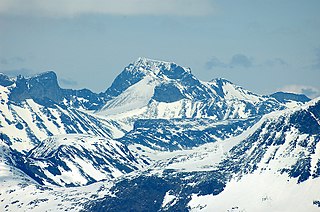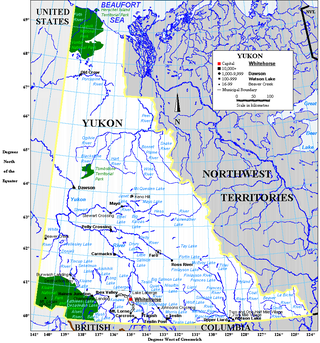
Greenland is located between the Arctic Ocean and the North Atlantic Ocean, northeast of Canada and northwest of Iceland. The territory comprises the island of Greenland—the largest island in the world—and more than a hundred other smaller islands. Greenland has a 1.2 kilometre long border with Canada on Hans Island. A sparse population is confined to small settlements along certain sectors of the coast. Greenland possesses the world's second-largest ice sheet.

A shoe is an item of footwear intended to protect and comfort the human foot. Though the human foot can adapt to varied terrains and climate conditions, it is vulnerable, and shoes provide protection. Form was originally tied to function but over time shoes also became fashion items. Some shoes are worn as safety equipment, such as steel-toe boots, which are required footwear at industrial worksites.

Saqqara, also spelled Sakkara or Saccara in English, is an Egyptian village in the markaz (county) of Badrashin in the Giza Governorate, that contains ancient burial grounds of Egyptian royalty, serving as the necropolis for the ancient Egyptian capital, Memphis. Saqqara contains numerous pyramids, including the Pyramid of Djoser, sometimes referred to as the Step Tomb, and a number of mastaba tombs. Located some 30 km (19 mi) south of modern-day Cairo, Saqqara covers an area of around 7 by 1.5 km.

In archaeology, cave paintings are a type of parietal art, found on the wall or ceilings of caves. The term usually implies prehistoric origin. These paintings were often created by Homo sapiens, but also Denisovans and Neanderthals; other species in the same Homo genus. Discussion around prehistoric art is important in understanding the history of the Homo sapiens species and how we have come to have unique abstract thoughts. Some point to these prehistoric paintings as possible examples of creativity, spirituality, and sentimental thinking in prehistoric humans.

Galdhøpiggen is the highest mountain in Norway, Scandinavia, and Northern Europe. The 2,469-metre-tall (8,100 ft) mountain is located in Lom Municipality in Innlandet county, Norway. It is in the Jotunheimen mountains within Jotunheimen National Park. The mountain sits about 25 kilometres (16 mi) southwest of the village of Fossbergom and about 45 kilometres (28 mi) northeast of the village of Øvre Årdal. The mountain is surrounded by several other notable mountains including Keilhaus topp to the east; Store Styggehøe to the southeast; Svellnosbreahesten, Midtre Tverråtinden, and Store Tverråtinden to the south; Storjuvtinden and Skardstinden to the west; Veslpiggen, Storgrovtinden, and Storgrovhøe to the northwest; and Galdhøi and Juvvasshøi to the northeast.

Rondane National Park is the oldest national park in Norway, established on 21 December 1962. The park is located in Innlandet county, in the municipalities of Dovre, Folldal, Sel, Nord-Fron, Sør-Fron, Stor-Elvdal, and Ringebu. The park contains ten peaks above 2,000 metres (6,560 ft), with the highest being Rondeslottet at an altitude of 2,178 m (7,146 ft). The park is an important habitat for herds of wild reindeer.

Star Carr is a Mesolithic archaeological site in North Yorkshire, England. It is around five miles (8 km) south of Scarborough. It is generally regarded as the most important and informative Mesolithic site in Great Britain. It is as important to the Mesolithic period as Stonehenge is to the Neolithic period or Scandinavian York is to understanding Viking Age Britain.

Jotunheimen is a mountainous area of roughly 3,500 square kilometres (1,400 sq mi) in southern Norway and is part of the long range known as the Scandinavian Mountains. The 29 highest mountains in Norway are all located in the Jotunheimen mountains, including the 2,469-metre (8,100 ft) tall mountain Galdhøpiggen. The Jotunheimen mountains straddle the border between Innlandet and Vestland counties.

Jotunheimen National Park is a national park in Norway, recognized as one of the country's premier hiking and fishing regions. The national park covers 1,151 square kilometres (444 sq mi) and is part of the larger area Jotunheimen. More than 250 peaks rise above an elevation of 1,900 metres (6,200 ft), including Northern Europe's two highest peaks: Galdhøpiggen at 2,469 metres (8,100 ft), and Glittertind at 2,465 metres (8,087 ft).

The West Ice is a patch of the Greenland Sea covered by pack ice during winter time. It is located north of Iceland, between East Greenland and Jan Mayen island. In Greenland and the Danish language, vestisen refers to the sea ice-covered waters off Greenland's west coast.
A snow patch is a geomorphological pattern of snow and firn accumulation which lies on the surface for a longer time than other seasonal snow cover. There are two types to distinguish; seasonal snow patches and perennial snow patches. Seasonal patches usually melt during the late summer but later than the rest of the snow. Perennial snow patches are stable for more than two years and also have a bigger influence on surroundings.
The year 2010 in archaeology

The Areni-1 shoe is a 5,500-year-old leather shoe that was found in 2008 in excellent condition in the Areni-1 cave located in the Vayots Dzor province of Armenia. It is a one-piece leather-hide shoe, the oldest piece of leather footwear in the world known to contemporary researchers. The discovery was made by an international team led by Boris Gasparyan, an archaeologist from the Institute of Archaeology and Ethnography of the National Academy of Sciences of Armenia.

The Yukon Ice Patches are a series of dozens of ice patches in the southern Yukon discovered in 1997, which have preserved hundreds of archaeological artifacts, with some more than 9,000 years old. The first ice patch was discovered on the mountain Thandlät, west of the Kusawa Lake campground which is 60 km (37 mi) west of Whitehorse, Yukon. The Yukon Ice Patch Project began shortly afterwards with a partnership between archaeologists in partnership with six Yukon First Nations, on whose traditional territory the ice patches were found. They include the Carcross/Tagish First Nation, the Kwanlin Dün First Nation, the Ta’an Kwäch’än Council, the Champagne and Aishihik First Nations, the Kluane First Nation, and the Teslin Tlingit Council.
This page lists major archaeological events of 2018.
This page lists major events of 2019 in archaeology.
This page lists major events of 2020 in archaeology.
This page lists significant events of 2022 in archaeology.
StoreKvitingskjølen is the highest peak on the mountain Kvitingskjølen located on the northern edge of Jotunheimen, in Lom municipality in Innlandet, Norway. It has a height of 2,064 meters. Vestre Kvitingskjølen is another peak with a height of 2,060 meters above sea level. Two peaks separated by a shallow saddle.













